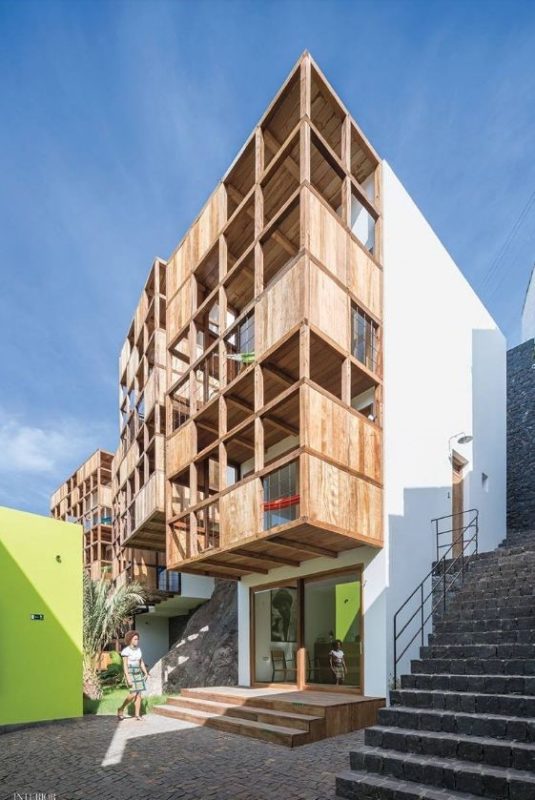
Hotel designers often suffer from the mixed blessing of abundance. With so many furniture, fabric,
and finish options available, the best practitioners must excel at exercising restraint, at editing and
curating. This dilemma evaporates, however, in the sunshine of Cape Verde, a nation of volcanic
islands 400 miles off West Africa. “It’s a totally different logic on Cape Verde,” Moreno Castellano
says. “We lack materials and fabricators, so we lack freedom in some ways.” You would never miss
it.
A Sardinian who arrived 13 years ago, Castellano co-founded Ramos Castellano Architects with
Eloisa Ramos, a Cape Verdean who had lived and worked on three continents before returning.
Ramos and Castellano have become known for hotel design notable for its colorful forms and
elegant lines in addition to its pragmatism. “Every solution is carefully studied to use local
resources as well as African artisans and technology, with a global vision,” Ramos explains. The most
adept moves fuse handcrafted and upcycled elements, at varied scales, to harmonize visually with
the indigenous palette and textures—thereby supporting the architects’ mission to buy and think
local. They also have a flair for merging contemporary architecture with the natural landscape.
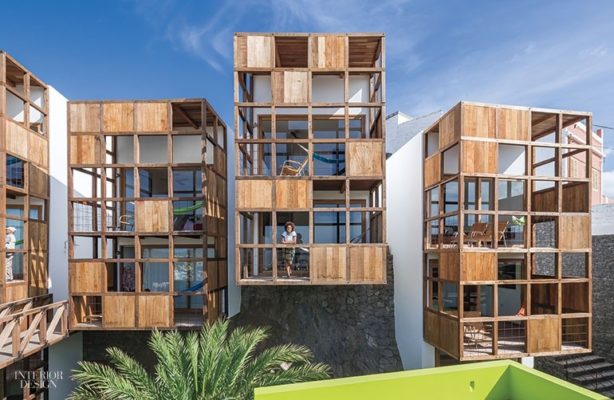
Reuse is essential to the innovative design of Terra Lodge, their hotel for another transplant, this
time a Frenchman. Théo Lautrey first came to Cape Verde to lead mountain expeditions, then fell in
love with its history and architectural heritage. Lautrey’s preservationist bent and passion for
sustainable tourism ingratiated him with the prominent Marques family in the port city of Mindelo
on the island of São Vicente. When family members decided to sell a colonial mansion, dating to
1900 when the archipelago belonged to Portugal, they received several generous offers. “But they
prioritized mine, even though it was lower, so they could sell to someone intending to preserve the
neoclassical architecture, which is very beautiful,” Lautrey says. Now refurbished and washed in a
vibrant green, the mansion houses his travel agency, Nobai.
The plot behind the mansion was just big enough, with some creativity, to add a hotel, and that was
the springboard for Terra Lodge. Ramos and Castellano’s initial concept was to show how simple
and easy it is to live the island life, perched on the side of one of the mountains ringing the port.
There’s a lovely view over the city to the Atlantic Ocean beyond, and the music scene has in recent
years become as renowned as the stunning landscape.
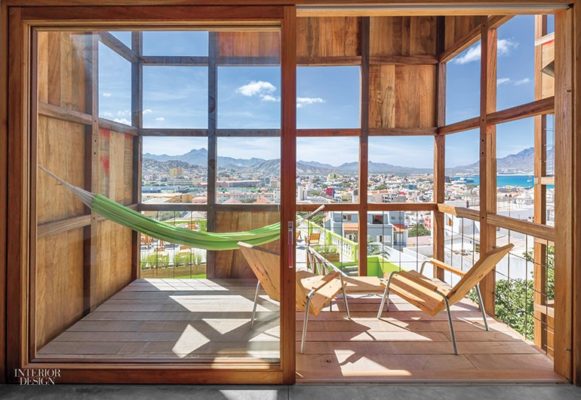
Ramos and Castellano built five structures more or less side by side, rotated to maximize the view
and ventilation, on a rocky ledge behind and adjacent to the mansion, appearing to emanate from
the very earth. Guest accommodations—11 standard rooms including one that’s wheelchairaccessible, plus a suite—are stacked inside the new buildings, along with reception and the breakfast room. Terraces occupy the roofs of the breakfast room and the mansion, the latter’s interior offering two lounges as well. Between the side of the mansion and the property line, the architects inserted a lap pool.
As a good neighbor, the architecture mimics the typical construction in the densely packed district.
“The structures are adapted to the morphology of the mountains,” Ramos explains. White limeplaster exteriors are fronted by gridded wooden volumes that partially enclose private verandas,
with some of the squares closed off by panels and other squares simply windowless open frames.
When wood is not available on the islands, where material resources are scarce, it’s usually
imported from African countries such as Ghana and the Democratic Republic of Congo, as it was in
this case. The sun-washed timber has a feel that’s elemental and native. Meanwhile, the colorful
painted iron panels of the front wall, screening the entry patio from the street, were recycled from
oil barrels.
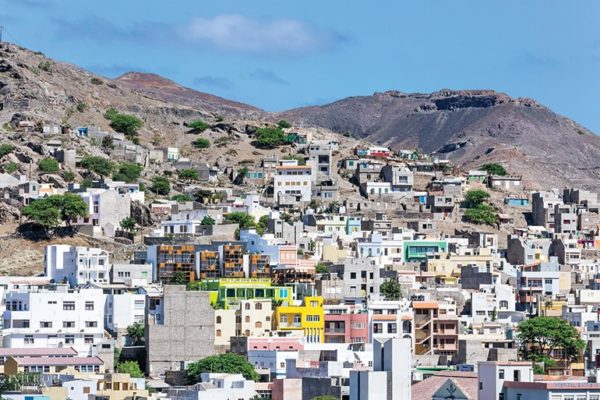
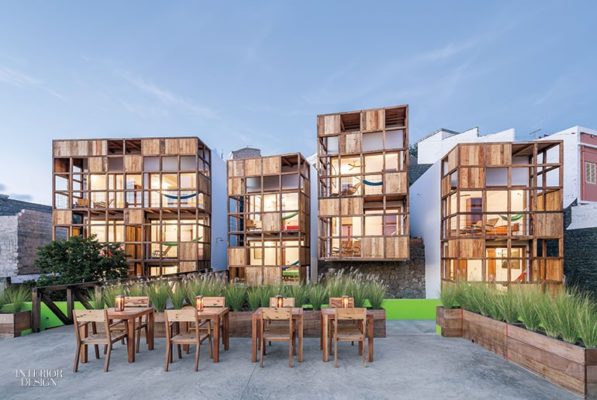
Guests are invited to participate in the eco-friendly approach. Taking advantage of cross
ventilation, supplemented by ceiling fans rather than air conditioning, the hotel is comfortable
year-round, thanks to Cape Verde’s mild and dry climate, very rare for a tropical location.
Sustainability has a few cost-reducing benefits, too. The electricity bill, for instance, tops out at the
equivalent of $35 per month. Castellano adds that, despite taking a beating from the strong sun
and salty winds, the unfinished wood tends to last longer.
The blend of found materials and rustic finishes, integrated with an elemental modernism, suggests
an authentic and organic rebirth of an early 20th-century ideal. It’s mixed with a uniquely African
island way of showing how local materials and handmade furnishings can add up to a singular
experience. According to Lautrey, Terra Lodge’s made-in-Africa vibe draws a steady stream of
European accents, especially outdoorsy trekkers from France, the U.K., and Scandinavia. One thing
they won’t find in their rooms? Televisions.
Project Team: Ilidio Alexandre: Structural Engineer. Ricardo Martins; José Neves: MEP. Mestre
Pulu; Rui: Woodwork. Duka: General Contractor. Perenz: Fans (Guest Rooms). IKEA: Bedding.




